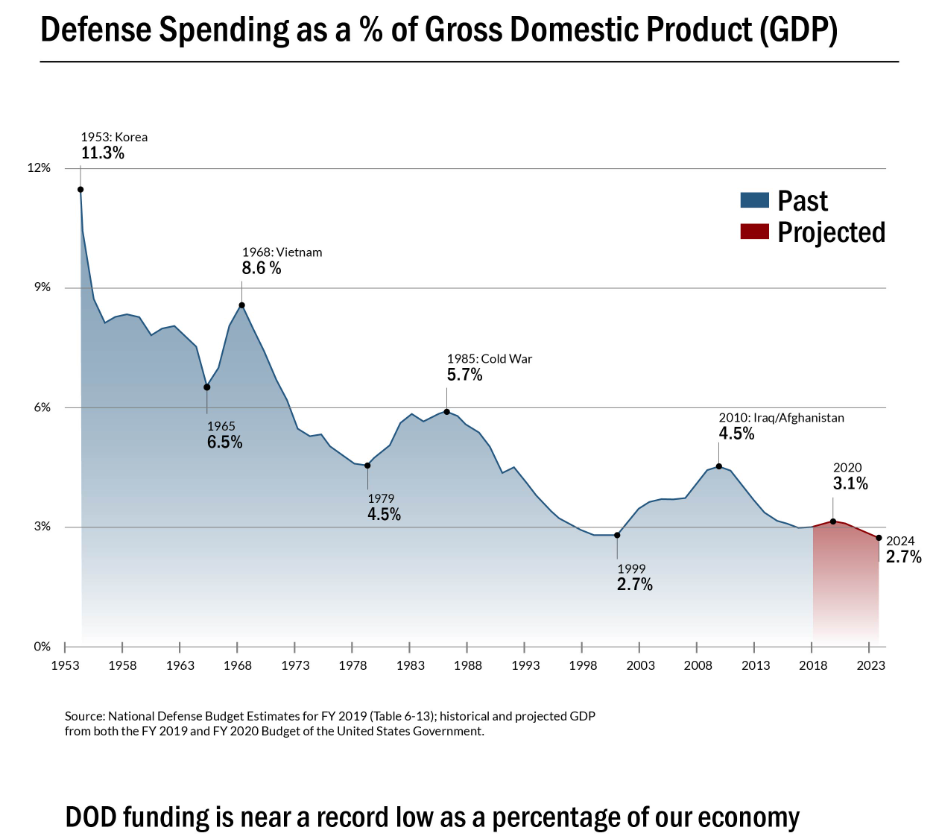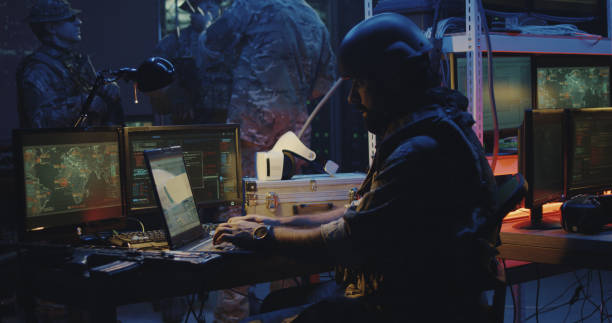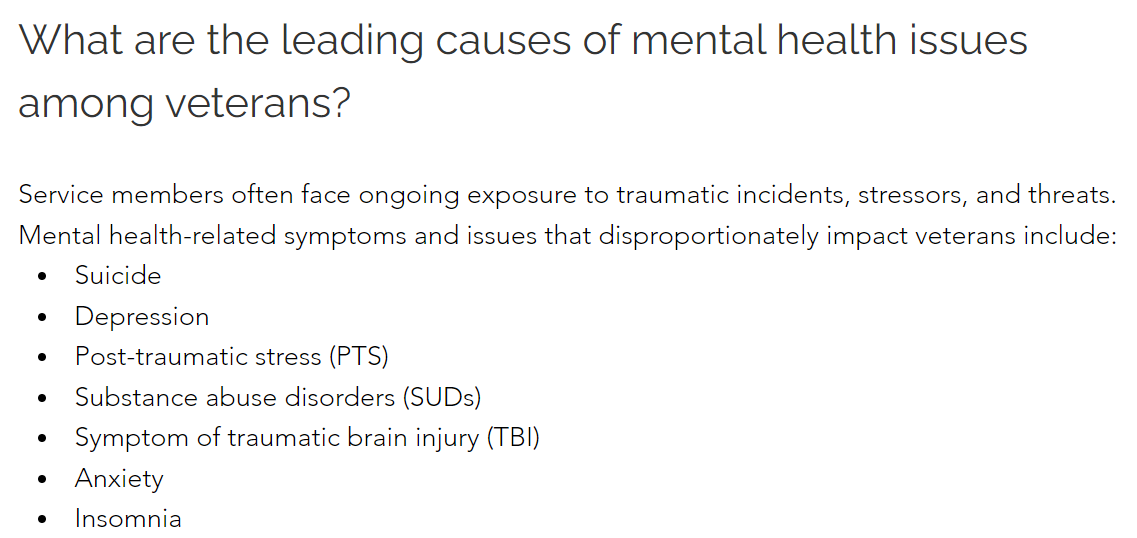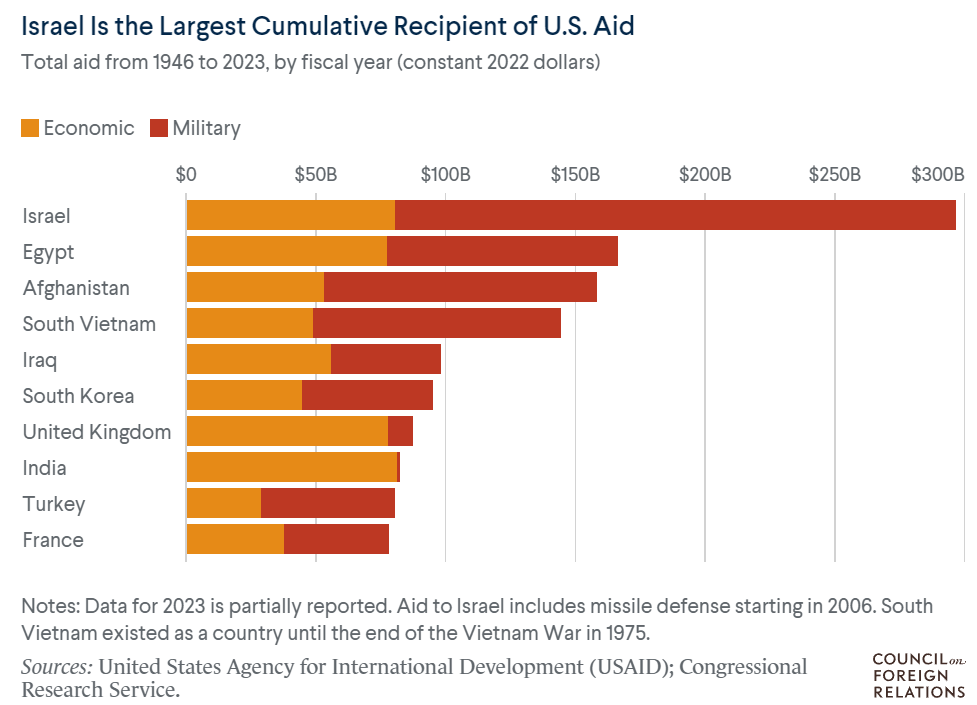The military-industrial complex, a term coined by President Dwight D. Eisenhower in 1961, casts a long shadow. It's a web of interconnectedness between the armed forces, defence contractors, and the government, influencing everything from global politics to the corner store down the street. In this extended exploration, we'll delve deeper into the complex history, economic impacts, technological advancements, and heavy human costs of this ever-present system.
_1714855916.png)
U.S. President . Dwight D. Eisenhower's Farewell Address
From Cold War Tensions to Modern Contracts
The roots of the military-industrial complex lie in the frosty soil of the Cold War. As the US and the Soviet Union locked horns in an arms race of unprecedented scale, the need for a powerful military fueled a peacetime arms buildup. Even after the Cold War thawed, defence spending remains a significant chunk of the US budget, with billions allocated to defence contracts and global arms sales. This continuous flow of funds keeps the gears of the military-industrial complex turning.

Profits, Power, and the Price Tag of War
Defence Giants and Their Bottom Line
Companies like Lockheed Martin, Raytheon Technologies, and General Dynamics are major players in this system, reaping substantial profits from these contracts. They're the ones supplying the military with everything from cutting-edge fighter jets and warships to sophisticated battlefield communication systems. Let's add some numbers to the story:
- Lockheed Martin: This aerospace and defence giant boasts consistent revenue growth, reaching a staggering Q1 2024 net sales of $17.2 billion, up from $15.1 billion in 2023. Net earnings were $1.5 billion, cash from operations was $1.6 billion, and free cash flow was $1.3 billion. The results included 13 weeks, compared to 12 weeks in 2023.
- Raytheon Technologies: Their merger with United Technologies solidified their market dominance, with revenues hitting a hefty $64 billion in 2021. Currently, Raytheon reported $6,659 million in sales for the first quarter of 2024, a 6% increase over the same period the previous year.
- General Dynamics: A diversified defence player with a presence in business aviation, land systems, and marine systems, General Dynamics reported revenues of $38.5 billion in 2021. Revenues for the first quarter of 2024 were $10.7 billion, up 8.6% from the same period in 2023, according to General Dynamics.
These figures highlight the significant financial gains defence contractors reap from military spending, raising questions about the true beneficiaries of this system.

A Double-Edged Sword: Innovation and Economic Growth
While the human cost of war is undeniable, military spending can also stimulate economic growth. It creates jobs in various sectors, from manufacturing to engineering, and fosters technological advancements that often benefit society as a whole. Let's explore the economic impacts in more detail:
- Defence Industry Boom: Defence contractors see increased demand for military hardware, technology, and services, leading to job creation and economic activity within this specific sector.
- Tech Innovation for Everyone: The need for advanced military capabilities has driven groundbreaking advancements that have found civilian applications. Technologies like the internet, GPS, and various medical innovations were initially developed for military use but have since become staples in our daily lives.
- Manufacturing on the Rise: Wars often lead to a surge in manufacturing activity as the need for vehicles, weapons, and other military equipment rises. This can provide a short-term economic boost, although the long-term sustainability of such growth is debatable.
- Energy Markets in Flux: Conflicts can disrupt global energy markets, impacting oil and gas prices. This can have a domino effect on various sectors of the economy as energy costs fluctuate.
- Financial Markets: War can lead to increased government spending and borrowing, influencing interest rates and the financial sector. The post-9/11 wars have cost the US at least $8 trillion, funded almost entirely through debt, affecting the debt/GDP ratio and interest rates.

The Balancing Act: Security versus Peace
While some sectors benefit economically from war, it's crucial to consider the broader consequences. The challenge lies in striking a balance between national security interests and the pursuit of global peace and stability. Here's where the conversation gets complex.
Is increased spending always the answer?
Critics argue that a bloated military budget can come at the expense of other crucial areas like education, infrastructure, and social welfare programmes. They question whether the current level of spending is truly necessary for national security and propose alternative approaches to global safety, such as diplomacy and international cooperation.
for more, read: The Dichotomy Of Sanctions: A Tool Of Diplomacy Or A Double-Edged Sword?.
The Cycle of Conflict
Furthermore, some argue that the military-industrial complex itself can perpetuate conflict. Defence contractors and arms manufacturers may have a vested interest in maintaining a certain level of international tension to secure ongoing contracts and profits. This can create a cycle where the very system designed to protect us may inadvertently contribute to instability.
The Cutting Edge: Military Tech and Its Risks
Advancements Shaping Modern Warfare
The military is constantly innovating, developing cutting-edge technologies that redefine the nature of warfare. Let's explore some key areas of progress:
- Combat Drones: Unmanned aerial vehicles like the MQ-9 Reaper ,have revolutionised warfare, enabling targeted strikes and reconnaissance missions with reduced risk to human life (on US side).
- Advanced Defence Systems: Stealth technology makes aircraft and ships harder to detect, while hypersonic missiles and precision-guided weapons enhance military capabilities with increased accuracy and destructive power.
- Cyberwarfare: This emerging domain involves attacking communication networks and infrastructure to disrupt adversaries without traditional warfare. However, the potential for unintended consequences and civilian collateral damage is high.
- Immersive Technologies: Virtual and augmented reality are being used for training simulations, allowing soldiers to experience realistic combat scenarios in a controlled environment.

The Perils of Progress
While these advancements offer tactical advantages, they also come with inherent risks.
- Tech Malfunctions: Advanced systems are complex and prone to malfunctions, potentially leading to devastating consequences.
- Cybersecurity Vulnerabilities: Cyberattacks can disrupt communications, sabotage infrastructure, and even manipulate weapons systems.
- Ethical Concerns: Autonomous weapons raise serious ethical questions about accountability and the potential for civilian casualties.
- Overreliance on Technology: Overdependence on technology could lead to a decline in critical thinking and human decision-making in the heat of conflict.
Finding common ground
Despite these concerns, the need for a strong national defence remains a valid consideration. The question becomes how to achieve this goal while minimising the negative consequences. Perhaps the answer lies in:
- Prioritising Strategic Investment: Focusing on targeted spending for cutting-edge technologies and training programmes rather than unchecked budgetary increases.
- Investing in Diplomacy: Allocating resources to strengthen diplomatic efforts, conflict resolution, and international cooperation initiatives.
- Transparency and Accountability: Increasing public oversight of military spending and defence contracts to ensure efficiency and ethical practices.

The heavy toll of war
Beyond the financial considerations lies the stark reality of war's human cost. Consider these sobering statistics:
- Veteran Suicide Rates: Mission Roll Call's March 2024 report reveals a 2.5 times higher suicide rate for GWOT veterans aged 18-35, with 30,177 active duty service members and GWOT veterans dying by suicide compared to 7,057 killed in combat.
- Casualties and Displacement: Since 9/11, over 940,000 people have died directly from war violence, while an estimated 3.6 to 3.8 million have perished indirectly in war zones. More than 432,000 civilians have lost their lives caught in the crossfire.
- The Ripple Effect: War's impact extends far beyond the battlefield. It forcibly displaces millions of people, with an estimated 110 million people seeking refuge in conflict-affected regions.
- Mental Health Crisis: The mental health toll of war is undeniable. Active duty personnel and veterans face a higher risk of suicide than combat deaths, highlighting the long-lasting psychological scars of conflict.

These statistics serve as a stark reminder of the human cost, often overshadowed by discussions of military might and economic gains.
The Saviour Complex and Rebuilding Efforts
The US has often been perceived as having a "saviour complex" when it comes to international conflicts and humanitarian efforts. This perception stems from its involvement in numerous conflicts, followed by extensive aid to the affected countries.
for more, read:US Senate Passes $95bn Bill For Aid To Ukraine, Israel, And Taiwan
The US has participated in nearly 400 military interventions since 1776, with half occurring since 1950. Major conflicts include the Vietnam War, the Gulf War, and the War on Terror in Afghanistan and Iraq. In FY2023, the Foreign Military Sales system saw a 55.9% increase in the value of transferred defence articles and services, reaching $80.9 billion, the highest annual total of sales and assistance provided to allies and partners. This figure includes $62.25 billion in arms sales.
The Duality of Power
This dual role of the US—as a participant in conflicts and an aid provider—raises complex questions. Critics argue that while the US offers substantial post-conflict aid, it often fails to address the root causes of conflicts or the long-term needs of affected populations.
The US strategy for conflict prevention and stability emphasises peacebuilding and anticipating violent conflicts. However, reality is more nuanced. The US has been both a catalyst for conflict and a force for reconstruction and aid. For instance, the Marshall Plan post-World War II aimed to bolster Europe's economy, prevent communist expansion, and jumpstart world trade. Similarly, the US continues to provide aid to countries where it has military interests or has participated in conflicts. This aid is often seen as a way to stabilise regions, promote democratic governance, and help nations rebuild.
for more read: Iran Israel Conflict - Will This Set The Middle East On Fire Once Again.?
However, the juxtaposition of the US as both a contributor to conflict and a provider of aid is met with criticism. Some see it as mitigating damage, while others see it as a genuine effort to promote global peace.
The US constantly navigates this complex landscape, balancing strategic and military positions.
for more, read: Understanding The Complex Web Of Racial Profiling In The US.
The Unseen Battlefield: Public Perception and the Future
Shifting Tides of Public Opinion
Public opinion on the military-industrial complex is constantly evolving. During times of heightened national security concerns, support for a strong military and defence budget may increase. Conversely, periods of peace and relative stability can lead to a push for reduced military budgets and a focus on diplomacy.
Here are some key factors influencing public perception:
- Media Portrayal: The way wars are portrayed in the media significantly impacts public opinion. Images of heroic soldiers and advanced technology can foster a sense of national pride and support for the military. However, graphic depictions of the war's brutality can evoke anti-war sentiment.
- Transparency and Accountability: A lack of transparency regarding military spending and operations can breed distrust among the public. When citizens feel they're not getting the full picture, support for the military-industrial complex can wane.
- Economic Considerations: As the cost of war rises, particularly when conflicts drag on for years, the public may question the financial burden and the return on investment. This can lead to pressure to seek alternative solutions and diplomatic approaches.
_1714863273.png)
for more, read: Can America Live Up To Its Ideals? The Fight For Free Speech For All.
Breaking the cycle
Moving forward, fostering a more informed and nuanced public discourse about the military-industrial complex is crucial. Here are some ways to achieve this:
- Promoting Open Dialogue: encouraging open discussions about national security, defence spending, and the ethical implications of warfare. This allows for a more balanced perspective and informed decision-making.
- Investing in Peacebuilding: Supporting initiatives that promote diplomacy, conflict resolution, and international cooperation. Investing in long-term peacebuilding efforts can help address the root causes of conflict, potentially reducing reliance on military intervention.
- Demanding Transparency: Holding governments and defence contractors accountable for their actions. Increased transparency regarding military spending and justification for interventions can foster greater public trust.
A World Beyond War?
The future of the military-industrial complex remains uncertain. While the need for national security is unlikely to disappear entirely, advancements in diplomacy, conflict resolution techniques, and non-violent defence strategies could potentially lead to a world where the military might take a back seat.
☮ Make love, not war ☮
The path towards a more peaceful world is paved with challenges. However, by fostering a more critical dialogue about the military-industrial complex, promoting alternative approaches to security, and demanding accountability from those involved, it's possible to envision a future where peace prevails.
Inputs from agencies
Image Source: Multiple sources
© Copyright 2024. All Rights Reserved Powered by Vygr Media.



























